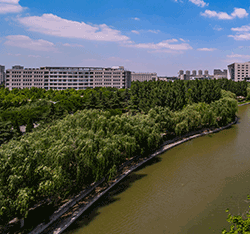

Heli Lu
Email: hk_lhl@163.com
Research interests:
Cartography and geographic information systems, Spatial modeling, Human geography, Sustainable development
Educational background:
Ph. D, Geography, Institute of Geographic Sciences and Natural Resources Research, Chinese Academy of Sciences
Work experience:
Professor, College of Geography and Environmental Science, Henan University, China
Visiting Professor, Nagoya University, Japan, 2019.5-2019.8
Visiting Professor, Hiroshima University, Japan, 2016-2017
JSPS-UNU Fellow, United Nations University-Institute of Advanced Studies, Japan, 2009-2012
Projects:
1. National Natural Science Foundation of China: Collaborative optimization of residential carbon emissions in rapidly urbanized areas based on THREE-DIMENSIONAL spatial compensation, NSFC42071267, 2021.1- 2024.12
2. National Natural Science Foundation of China: Mechanism of reducing tropical forest degradation in China based on REDD+ framework, NSFC41371525, 2014.1-2017.12.
3. Sino-us CPGIS Cooperative Base Open Fund project: Research on key technologies of carbon assessment and emission reduction strategies, JOF201702, 2017.01-2018.12.
Publications:
[1] Qiang Li, Menglin Xia, Xiaona Guo, Yalin Shi, Ruimin Guan, Qing Liu, Yongxin Cai, Heli Lu*. Spatial characteristics and influencing factors of risk perception of haze in China: The case study of publishing online comments about haze news on Sina. Science of the Total Environment, 2021, 785.
[2] Guifang Liu, Yafei Feng, Menglin Xia, Heli Lu*, et al. Framework for accounting reference levels for REDD+ in tropical forests: case study from Xishuangbanna, China. Remote Sensing, 2021, 13.
[3] Heli Lu*, et al. Featured front cover. Land Degradation and Development, 2020, 31.
[4] Guifang Liu, Qing Liu, Mengxiao Song, Junsheng Chen, Chuanrong Zhang, Xing Meng, Jincai Zhao, Heli Lu*. Costs and carbon sequestration assessment for REDD+ in Indonesia. Forests, 2020,11.
[5] Heli Lu* et al. Approaches to quantifying carbon emissions from degradation in pan-tropic forests—Implications for effective REDD monitoring. Land Degradation and Development, 2020, 31.
[6] Qiang Li, Qing Liu, Xiaona Guo, Shuo Xu, Jingyu Liu, Heli Lu*. Evolution and transformation of the central place theory in E-Business: China’s C2C online game marketing. Sustainability, 2019, 11.
[7] Siqi Lu, Chuanrong Zhang, Heli Lu*. Spatio-temporal dynamics of shifting cultivation in Upland Myanmar using time series images and implications for REDD+. Land Surface and Cryosphere Remote Sensing IV, 2018.
[8] Heli Lu* et al. Mapping China’s ghost cities through the combination of nighttime satellite data and daytime satellite data. Remote Sensing, 2018, 10, 1037.
[9] Heli Lu* et al. Marginal abatement cost curves for REDD+ in Kalimantan, Indonesia and the potential role of cost-saving plantations. Environmental Research Letters, 2018, 13, 075006.
[10] Heli Lu* et al. Spatial pattern of residential carbon dioxide emissions in a rapidly urbanizing Chinese city and its mismatch effect. Sustainability, 2018, 10, 827.
[11] Heli Lu et al. Carbon, soil, and ecological benefits of REDD+ policiesin Southwest China. ScienceAsia, 2016, 42: 1-11.
[13] Heli Lu*, Guifang, Liu. Opportunity costs of carbon emissions stemming from changes in land use. Sustainability, 2015, 7, 3665-3682.
[14] Heli Lu*, Guifang, Liu. Spatial effects of carbon dioxide emissions from residential energy consumption: A county-level study using enhanced nocturnal lighting. Applied Ecology, 2014, 131: 297-306.
